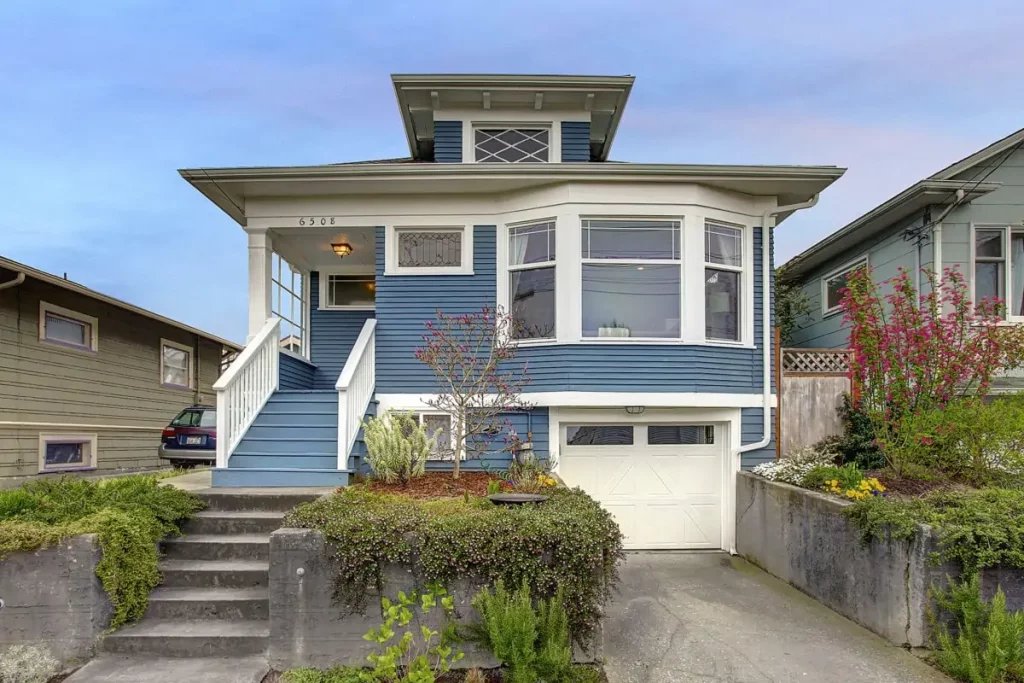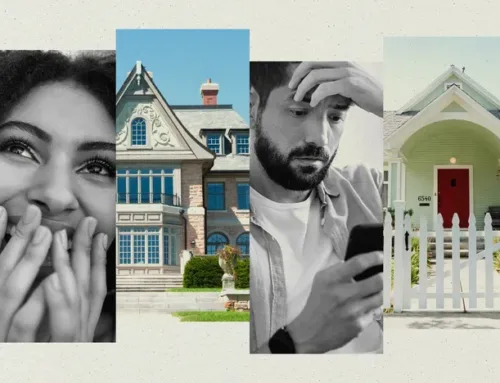Published on August 12, 2021 by Julia Weaver
Updated on September 9th, 2021
You never know when a disaster will strike and damage your home – whether it be storm damage, fire damage, or a burglary. One way to ensure you have financial protection in case of an emergency situation or unexpected event is through home insurance. However, there are many home insurance myths that can lead homeowners to a costly discovery of gaps in coverage.
Common misconceptions around home insurance include what it does and doesn’t cover, what type of plan is best, and whether you legally need coverage. Here we debunk 7 of the most common home insurance myths.

Home insurance myth #1: Mold, floods, and termite damage are covered
One common misconception regarding home insurance is what is and isn’t covered in the insurance policy. Homeowners insurance will reimburse you when your home or personal property are burglarized or damaged by an event that is covered by your policy. Mold damage, flood damage, and termite damage, however, are not covered in most standard policies. Let’s talk about why.
Flood damage
While normal water damage caused by things like a broken pipe or an overflowing sink is typically covered, damage from a flood is not typically included. This is because a flood is considered a gradual event rather than sudden or accidental. However, some home insurance policies have a special clause for this type of damage. If your home is at risk of flood damage or sewer and drain backups, consider purchasing flood insurance to protect your home from flooding. In fact, some mortgage lenders require coverage even if your home is in a moderate-to-low risk area. Check out Federal Emergency Management Agency (FEMA)’s Map Service Center to find out what level of risk your home is in.
Mold and termite damage
Mold damage, in the eyes of an insurance company, is a preventable problem and is the homeowners financial responsibility. One exception is if it’s related to a covered peril, an event that your home insurance will reimburse you for. In other words, if the mold, mildew, or fungus is a result of a specific problem, such as a burst pipe, it will then be covered by your policy.
All across the United States, but most commonly seen in cities like Los Angeles, CA, New York, NY, and Miami, FL, termites and other pests can find their way into homes and wreak havoc. The cost to remove termites and repair the damage is usually excluded from a homeowners insurance policy. This is due in part to the timespan it takes to develop a termite infestation – usually three to five years – and homeowners insurance covers damage that is sudden and accidental. It’s also difficult to gauge when exactly the damage occurred, so if you’ve changed insurance carriers in the past few years, there may be some debate on which insurance provider would cover the cost.
Consider scheduling a yearly mold inspection and termite inspection, and be sure to keep an eye on potential problem areas yourself. Ready to learn more about what isn’t covered? Don’t forget these 5 things to know about home insurance too!
Home insurance myth #2: Everything in my house is covered
It’s important to read through your insurance terms to understand which belongings are covered by your insurance. Your personal belongings, such as your furniture, appliances, and even your belongings outside of the home are typically covered.
However, home insurance policies have limits on how many luxury goods are covered. You might also be surprised what is considered a luxury good to some insurance companies. Things like expensive jewelry, art, clothing, or computers may not be covered in the event of an otherwise covered incident. Be sure that the coverage limits in your policy are adequate to fully protect you against loss due to damage or theft. If necessary, you can pay to include additional coverage for those items.
To ensure that all of your most prized items are covered, you will want to read the terms of your policy carefully. Consider creating an inventory list of your belongings. This can be helpful when determining the amount of coverage you need, but also in case of an unexpected event, you’ll have documentation on what you need to be reimbursed for.
Home insurance myth #3: I am required by law to have homeowners insurance
Another common homeowners insurance myth is that coverage is required by law. The truth is, none of the 50 states of the U.S. require you to have home insurance.
As previously mentioned, your mortgage provider may require a homeowners insurance policy. In the event that your home is damaged by a natural disaster, for example, insurance safeguards not only you, but the mortgage company too. They need to protect their investment and the value of the home. The mortgagee clause, a provision added to an insurance policy, protects the mortgage lender from incurring a major loss in the event that loss or damage occurs to your property. It guarantees that the homeowners insurance company will owe the lender.
Home insurance myth #4: Bundling coverage is always better
For many people, bundling home and auto insurance can be a great way to see reduced rates on both fronts, but this isn’t always the case. There will always be exceptions to what type of coverage will give you the best premiums, so you should always shop around on a case-by-case basis.
For example, bundling your home insurance with your auto insurance just a year or two before moving to a smaller home or selling your car could get you stuck with higher rates. Downsizing your home is challenging enough on its own, and you don’t need to be paying more than necessary.
It is generally a good idea to compare rates again after you move, sell a car, or otherwise change up anything related to your policies. Your existing plans or bundles may no longer be the best option, and you may want to try to save money where you can.

Home insurance myth #5: Damage caused by fallen trees is covered by my neighbor’s insurance
Suppose a tree falls onto your property from your neighbor’s yard during a storm or hurricane. Will you or your neighbor be responsible for submitting the claim?
It’s commonly mistaken that the neighbors insurance should be paying to cover the damage done to your property. However, your neighbor likely won’t be held liable in most states unless there was a clear warning of the danger of the tree falling down. Otherwise, it is simply an unfortunate accident.
Unfortunate accidents are exactly why you need to have a good home insurance policy. You never know what might happen.
Home insurance myth #6: The amount of homeowners insurance I need is based on the market value of my home
This statement is false. The amount of homeowners insurance you need is based amount it’d cost to rebuild your home in the event that it’s completely destroyed. This includes the construction costs and materials. Because your home value is based on other factors like the location, housing market trends, and nearby properties, it does not impact how much homeowners insurance you need.
Home insurance myth #7: Purchasing a policy isn’t worth it
When it comes to an unexpected event occurring that damages or destroys your home or your belongings, it’s easy to assume it won’t happen to you. Month after month of paying your homeowners insurance premium and not using it for anything can feel like you’re being ripped off. However, insurance can help you save hundreds of thousands of dollars if disaster strikes.
For example, if a wildfire or windstorm damages your home and your personal belongings, your policy can help pay to repair or rebuild your home, replace belongings, and help pay for temporary housing in the meantime. Or, if a visitor is injured on your property and decides to sue you, your insurance can help cover legal costs. However, it is important to note that any injuries to you or a family member on your own property are not covered by your homeowners insurance.
Owning a home has countless benefits, but it also comes with many unknowns and costly risks. Homeowners insurance is a great way to protect yourself financially. Be sure to compare home insurance rates and terms to find the best insurance plan for your needs.
Source- https://www.redfin.com/blog/home-insurance-myths/






